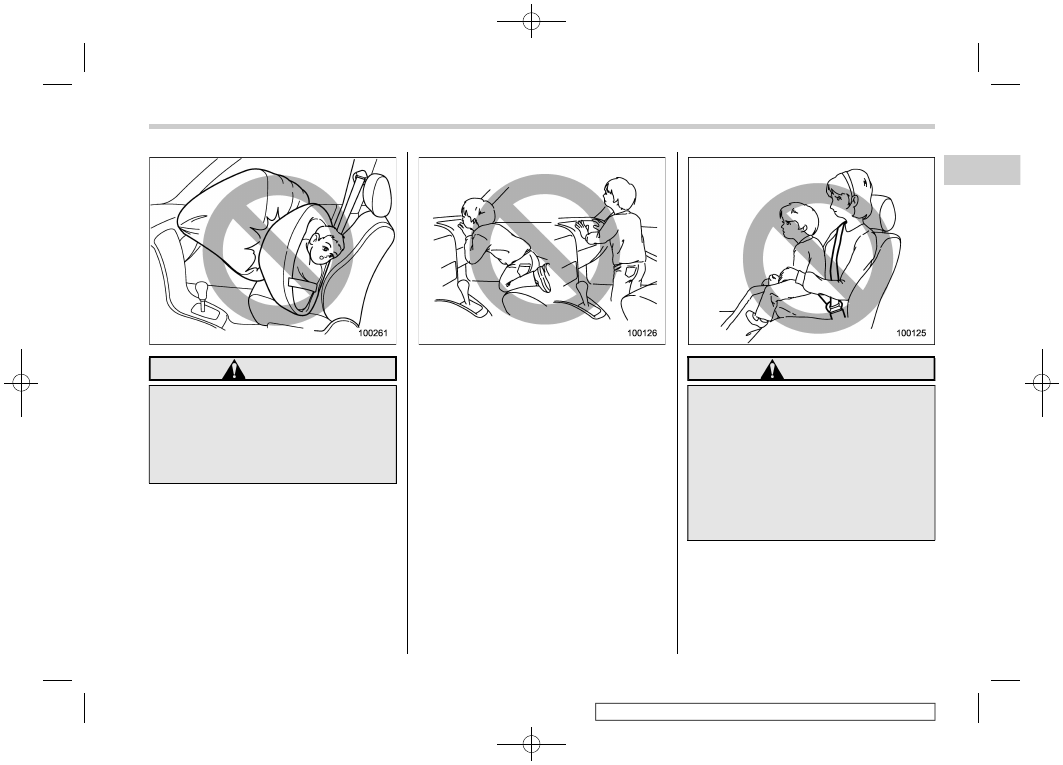Subaru WRX STI (2019 year). Manual - part 5

(69,1)
北米Model "A1720BE-A" EDITED: 2018/ 3/ 9
WARNING
NEVER INSTALL A CHILD SEAT IN
THE FRONT SEAT. DOING SO RISKS
SERIOUS INJURY OR DEATH TO
THE CHILD BY PLACING THE
CHILD’S HEAD TOO CLOSE TO
THE SRS AIRBAG.
WARNING
Observe the following instructions.
.
Never allow a child to stand up or
kneel on the front passenger’s
seat.
.
Never hold a child on your lap or
in your arms.
Since the SRS airbag deploys with
considerable force, it can injure or
even kill a child.
– CONTINUED –
Seat, seatbelt and SRS airbags/SRS airbag (Supplemental Restraint System airbag)
1-39
1